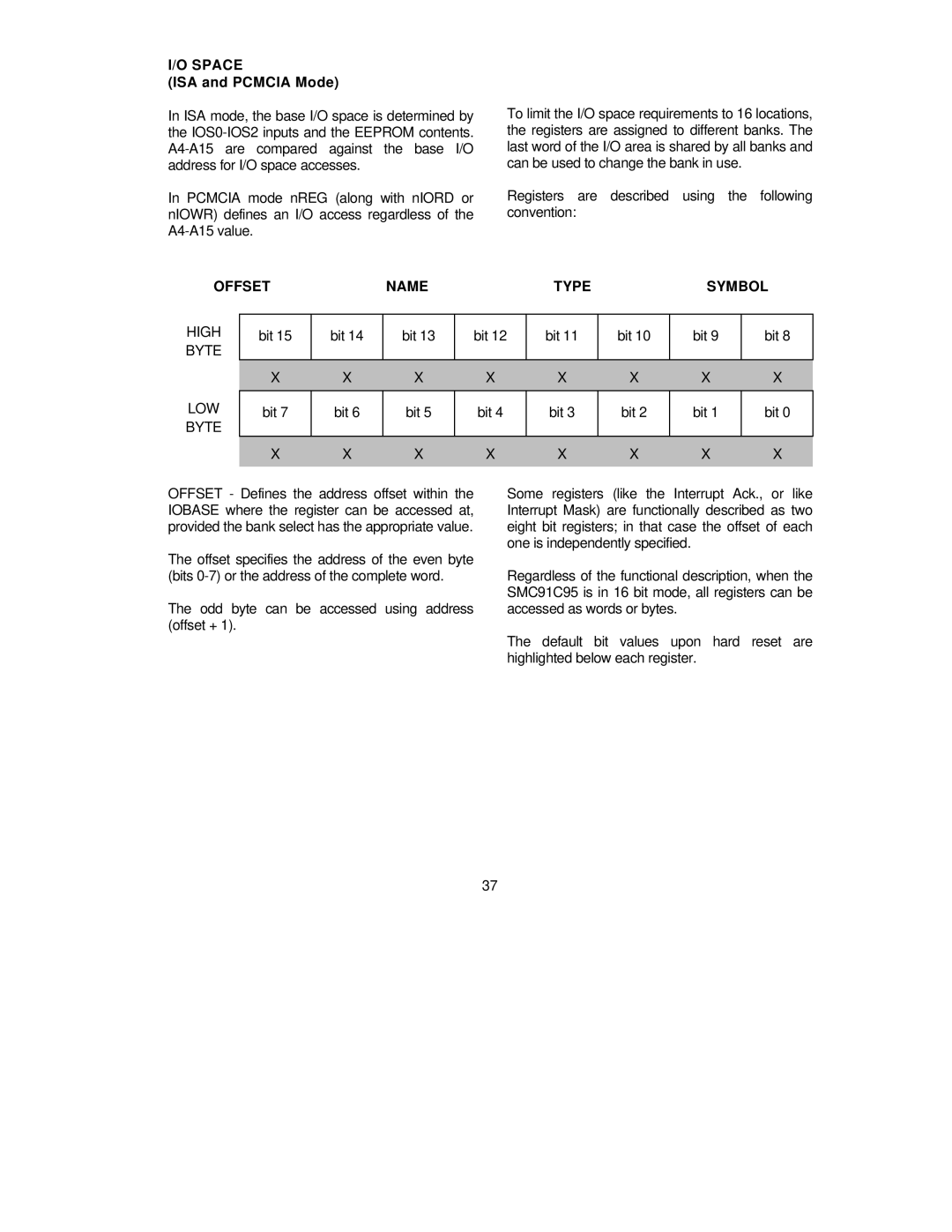I/O SPACE
(ISA and PCMCIA Mode)
In ISA mode, the base I/O space is determined by the
In PCMCIA mode nREG (along with nIORD or nIOWR) defines an I/O access regardless of the
OFFSETNAME
To limit the I/O space requirements to 16 locations, the registers are assigned to different banks. The last word of the I/O area is shared by all banks and can be used to change the bank in use.
Registers are described using the following convention:
TYPESYMBOL
HIGH | bit 15 | bit 14 | bit 13 | bit 12 | bit 11 | bit 10 | bit 9 | bit 8 |
BYTE |
|
|
|
|
|
|
|
|
| X | X | X | X | X | X | X | X |
LOW | bit 7 | bit 6 | bit 5 | bit 4 | bit 3 | bit 2 | bit 1 | bit 0 |
BYTE |
|
|
|
|
|
|
|
|
| X | X | X | X | X | X | X | X |
|
|
|
|
|
|
|
|
|
OFFSET - Defines the address offset within the IOBASE where the register can be accessed at, provided the bank select has the appropriate value.
The offset specifies the address of the even byte (bits
The odd byte can be accessed using address (offset + 1).
Some registers (like the Interrupt Ack., or like Interrupt Mask) are functionally described as two eight bit registers; in that case the offset of each one is independently specified.
Regardless of the functional description, when the SMC91C95 is in 16 bit mode, all registers can be accessed as words or bytes.
The default bit values upon hard reset are highlighted below each register.
37
